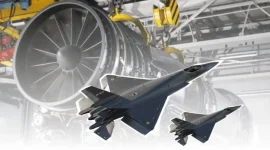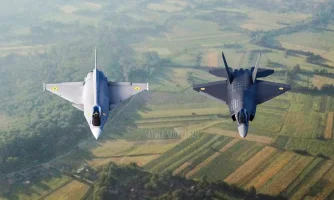- Views: 2K
- Replies: 3
The Indian Navy is set to achieve a pivotal advancement in the modernisation of its surface fleet by officially initiating the Acceptance of Necessity (AoN) process for its futuristic Next Generation Destroyers (NGD).
Internally known as the Project-18 or P-18 class, these vessels represent a bold step towards securing maritime superiority in the coming decades.
Vice Admiral Sanjay J. Vatsayan, the Vice Chief of the Naval Staff, addressed the media during a recent naval commanders' conference, confirming that the force has finalised a "robust design" for these advanced warships.
He expressed strong optimism regarding the project's administrative progress, anticipating government clearance within the current financial year (2025-26).
"We are hopeful of securing the AoN this fiscal year itself, which would allow us to award the construction contracts within the next two years," Vice Admiral Vatsayan remarked.
A Generational Leap in Tonnage and Capability
With a projected full-load displacement of roughly 11,000 tonnes, the P-18 destroyers are slated to become the largest combatant vessels ever constructed for the Indian Navy.This immense scale significantly outstrips the current frontline destroyers, including the 7,500-tonne Kolkata-class (P-15A) and the 8,200-tonne Visakhapatnam-class (P-15B), marking a shift towards heavier, more enduring platforms capable of sustained blue-water operations.
According to defence sources privy to the programme, Project-18 is not merely an incremental update but a transformative technological leap. These ships are designed to act as floating technology demonstrators, integrating a suite of indigenous systems that are currently reaching operational maturity.
Key Technological Features
The P-18 class is expected to host an array of cutting-edge technologies designed to address future threats:- Advanced Sensors: The vessels will feature next-generation multifunction digital Active Electronically Scanned Array (AESA) radars utilising Gallium Nitride (GaN) modules for superior detection capabilities.
- Integrated Stealth & EW: A unified integrated mast will house Signal Intelligence (SIGINT) and Communication Intelligence (COMINT) suites, alongside advanced electronic warfare systems. The hull design will focus on enhanced stealth, significantly reducing radar, infrared, acoustic, and magnetic signatures.
- Future Weaponry: The destroyers will be equipped with high-energy Directed Energy Weapons (DEW) in the 50–100 kW range, primarily for countering drones and incoming missiles. They will also feature hardpoints for experimental railguns or hyper-velocity projectiles (HVP).
- Firepower: An expanded Vertical Launch System (VLS), likely housing between 96 and 128 cells, will accommodate a mix of Barak-8 ER, VL-SRSAM, and future hypersonic missiles. Notably, the ships will include provisions for integrating the hypersonic or high-supersonic BrahMos-II missiles.
- Propulsion: The class will utilise an advanced hybrid Integrated Electric Propulsion (IEP) system, offering greater efficiency and power management for energy-intensive weapons.
- Unmanned Integration: The ships will be fully networked to operate in tandem with unmanned aerial, surface, and underwater vehicles, acting as a mothership for autonomous systems.
Operational Efficiency and Construction
A key focus of the P-18 design is automation. The new class is projected to operate with a crew complement reduced by 25–30% compared to the Visakhapatnam class, while simultaneously offering improved survivability and damage-control mechanisms.The construction of these behemoths is planned under the Strategic Partnership (SP) model. Leading Indian shipyards, specifically Mazagon Dock Shipbuilders Ltd (MDL) and Garden Reach Shipbuilders & Engineers (GRSE), are considered the frontrunners for the project.
While a foreign collaborator will be selected to assist with critical propulsion and combat system integration, the Navy is insisting on high indigenous content—targeting 70–75% from the very first vessel.
Industry insiders suggest that preliminary discussions with global marine defence majors have already taken place.
Strategic Significance
The introduction of the P-18 class aligns with the Indian Navy's broader strategic goal of maintaining a 170-175 ship fleet by 2035 to counter expanding regional navies. As a senior officer at naval headquarters noted,"The P-18 is not just about tonnage. It is about dominating the Indian Ocean Region in the 2040s and beyond with capabilities that match or exceed anything fielded by regional peers."



